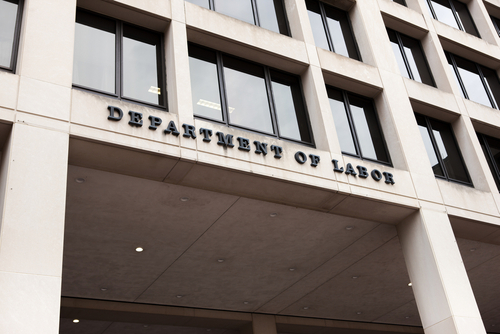A final rule from the U.S. Department of Labor (DOL) means employers can expect a much tougher time justifying a worker’s status as an independent contractor—a fact that has big implications for the gig economy and has attorneys who advise employers urging caution.
The final rule, announced on January 9 and scheduled to be published in the Federal Register on January 10, is slated to take effect on March 11. The DOL’s intent is to combat misclassification of workers as independent contractors when they instead should be considered employees under the federal Fair Labor Standards Act (FLSA).
The new rule addresses six factors to consider when classifying workers:
- The worker’s opportunity for profit or loss;
- The financial stake and nature of any resources a worker has invested in the work;
- The degree of permanence of the work relationship;
- The degree of control an employer has over the person’s work;
- Whether the work the person does is essential to the employer’s business; and
- The use of the worker’s skill and initiative.
The DOL’s interpretation of those factors “is heavily weighted to yield employee status,” according to Burton J. Fishman, an attorney with FortneyScott in Washington, D.C. He says every factor in the new rule—for example, scheduling, right to work elsewhere, reserved control—will indicate employee rather than independent contractor status.
Advice for Employers
Assuming the new rule takes effect as scheduled, it will make the independent contractor standard more difficult to meet. James P. Reidy, an attorney with Sheehan Phinney in Manchester, New Hampshire, has two words of advice for employers who want to use independent contractors: “Be careful.”
“That is because the risks of misclassification far outweigh the benefits of an independent contractor classification,” Reidy says. “At risk are unpaid wages and benefits as well as civil penalties.”
Fishman advises employers to carefully check the factors set out in the rule. He says some business models “are being targeted and will be profoundly affected; others, like the franchise model, may have to adapt.”
In addition to the new federal rule, employers need to keep state laws in mind. For example, California has an even tougher test to determine if workers can be properly classified as independent contractors.
Some History
The new rule has come down a long road. During the waning days of the Trump administration in January 2021, the DOL issued a rule relaxing the standards that must be met to justify independent contractor status, but that rule wasn’t scheduled to take effect until March 2021.
When the Biden administration began in January 2021, the Trump administration’s rule was first delayed and then withdrawn. But it was reinstated after a Texas U.S. district court heard a lawsuit challenging the effort to delay and withdraw it.
Following the court decision, the Biden administration issued a new proposed rule in October 2022. Before issuing the new final rule, the DOL considered comments collected during the rule’s comment period as well as feedback from stakeholders at forums in the summer of 2022.
Will the new rule also face legal challenge? “Absolutely,” Fishman says. “This is certainly a major question, and the court will be asked to determine whether such a far-reaching regulation is legitimate without more congressional approval.”
Fishman says the legal battle will be long, bitter, and well-financed.
Tammy Binford is a Contributing Editor at HR Daily Advisor.

